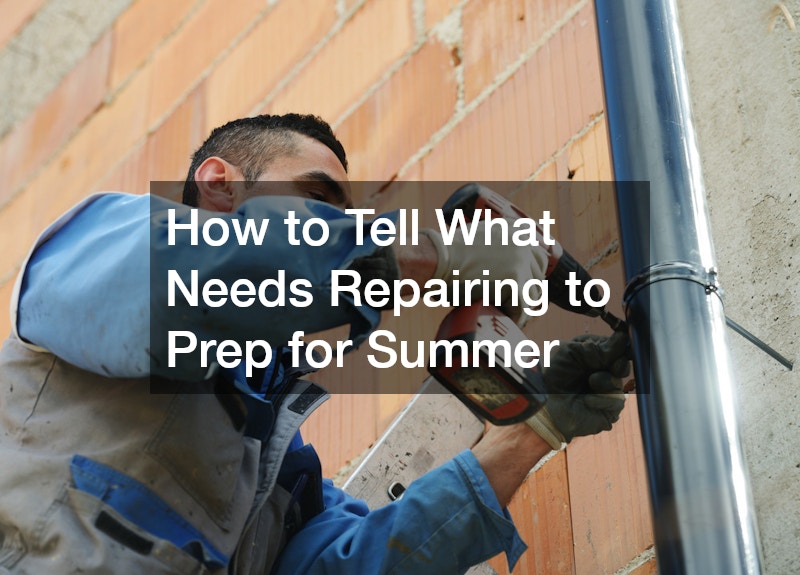Awnings offer more than just aesthetic appeal—they provide practical protection from the sun, rain and wind and they help reduce energy costs by shading windows and doors. Whether installed on a home or commercial property, awnings serve as valuable extensions of outdoor living areas and building facades.
However, their exposure to the elements means regular maintenance is essential to preserve their structural integrity and visual charm over time. By adopting a consistent care routine, property owners can extend the lifespan of their awnings and continue to enjoy their benefits for years to come.
Routine Cleaning to Prevent Damage
Dust, debris, pollen and bird droppings can accumulate on awnings quickly, particularly during seasonal changes. Over time, this buildup can lead to fabric discolouration, mould growth and degradation of materials. To maintain their condition, it is important to clean awnings regularly using mild soap and water. Avoid harsh chemicals or abrasive brushes that could damage the surface. Instead, use a soft cloth or sponge and gently scrub the fabric or metal components. Rinse thoroughly to remove all soap residue, as it can attract more dirt if left behind. This basic yet essential practice helps keep awnings looking fresh and prevents premature wear.
Inspect for Signs of Wear & Tear
Even the highest quality awnings are not immune to wear. Routine inspections allow for early detection of issues such as frayed fabric edges, rust on metal components, loose fasteners, or weakened stitching. Checking the frame for bends or misalignment is also crucial, especially after strong winds or storms. Identifying and addressing minor problems before they worsen can save on costly repairs or full replacements later. Pay close attention to the seams and mounting brackets, as these are common failure points. If necessary, consult a professional to conduct a more thorough examination, particularly if your awnings are motorised or retractable and involve electrical systems.
Protect Against Harsh Weather
Australia’s climate can be harsh and unpredictable. To maximise the longevity of your awnings, it’s vital to take precautionary measures during extreme weather events. High winds, torrential rains and heavy hail can damage even the sturdiest awning systems. Retracting or securely fastening awnings before a storm helps protect the fabric and frame from undue stress. For fixed awnings, consider installing protective covers or weather-resistant coatings that enhance durability. While modern designs are often engineered to withstand challenging conditions, proactive steps remain the most effective way to prevent damage and maintain performance.
Treat and Prevent Mould & Mildew
Mould and mildew thrive in damp, shaded areas—conditions often found under or on awnings, especially in humid regions or during the wetter months. These fungi not only discolour the fabric but can also degrade the material over time. If mildew appears, treat it promptly using a solution of diluted vinegar or specialised fabric cleaner designed for outdoor use. Ensuring that the awning is completely dry before retracting it or covering it will also reduce the chance of mould growth. Good air circulation and occasional exposure to sunlight further help deter fungal development.
Maintain Mechanical Components
Motorised or retractable awnings feature moving parts that require regular lubrication and upkeep. Joints, arms, springs and roller mechanisms should be inspected periodically to ensure they function smoothly. Dust and grime can accumulate inside motor housings or gear systems, leading to sluggish operation or mechanical failure. Keeping these parts clean and well-lubricated helps maintain ease of use and prevents unnecessary strain on the system. If your awning starts making unusual noises during operation or fails to retract fully, it could indicate an internal issue that needs attention. In such cases, professional servicing may be required to prevent more serious complications.
Store or Cover When Not in Use
For seasonal or portable awnings, proper storage is a key factor in extending lifespan. When not in use for extended periods, store them in a clean, dry place, away from direct sunlight and moisture. Ensure they are fully dry before folding to prevent mould development. If removal isn’t practical, consider investing in protective covers that shield the awnings from dust, UV rays and rain while not in use. These covers are especially useful during winter months or when the property is unoccupied. Thoughtful storage practices can significantly reduce wear and extend the service life of awning materials.
Schedule Professional Servicing
While routine maintenance can be handled by most property owners, periodic professional servicing ensures that more technical aspects are properly addressed. Certified technicians can assess alignment, test motor function, reinforce brackets and make recommendations for repairs or upgrades. This is especially important for commercial properties where awnings are subject to greater usage and exposure. Annual check-ups can provide peace of mind, ensuring that everything is operating safely and efficiently. Professional maintenance is an investment that can prevent unexpected failures and keep your outdoor areas functioning optimally.
Prolong Performance with Preventative Care
Maintaining your awnings is a simple but vital task that can greatly enhance their lifespan and performance. From routine cleaning and mechanical inspections to protective storage and professional servicing, each step contributes to keeping your awnings in excellent condition. By investing time in preventative care, property owners can continue to enjoy the benefits of shade, comfort and curb appeal for years to come, all while avoiding unnecessary expenses and preserving the value of their original investment.




